Streacom's FC10 and Nano150: Building a Fanless Ivy Bridge HTPC
by Ganesh T S on December 22, 2012 3:30 AM EST- Posted in
- HTPC
- Fanless
- Ivy Bridge
Thermal Performance
Evaluation of the thermal performance of passive systems is absolutely essential because it is quite common for improperly designed thermal solutions to not prevent processors from reaching their maximum permissible junction temperature. Once this temperature is reached, thermal throttling is activated. The processor first reacts by lowering its operating frequency. If the cooling solution is bad, it might even result in the processor shutting itself down.
The Streacom OEM solution used in the Aleutia Relia wasn't very effective (though Streacom refused to comment on those results). However, their previous chassis / cooling solutions had always been effective in operation, and we weren't unduly worried about the FC10 with respect to this aspect. That said, we did carry out the same experiments performed with the Aleutia Relia, but restricted ourselves to room temperature (72 F = 22 C) tests only.
Our loading test consists of running Prime 95 in maximum power consumption mode along with Furmark in Stability Test mode. Instead of running the test for 20 minutes, we subjected the unit to 12 hours of stress continuously.
Power consumed at the wall was recorded for the first 90 minutes or so (and we found that it settled down to around 72 W beyond that). Unlike the Relia where thermal throttling was activated and resulted in power consumption at the wall going down after some time, we find that there is no thermal throttling at play in this system. The load and CPU frequencies were presented in the Relia review, but we won't present them here since the load stayed at 100% and the frequency of the cores was always at 3.3 GHz throughout the course of the stress test.
The CPU core temperatures are presented in the graphs above. Interestingly, the second core was always a couple of degrees cooler than the first core. The maximum junction temperature of the Core i3-3225 is 105 C, and the FC10 cooling mechanism was able to keep it at a safe temperature.
Another interesting aspect is how fast the unit is able to get back to the idle temperature after removal of the processor load. The graph below shows that the unit gets back to the idling temperature within 90 minutes.
We conclude this section with a thermal profile of the case and the heat sink when the unit is being subjected to full load using Prime 95 and Furmark. All the temperatures are in Farenheit.
The temperature on the lower CPU mount noted above was actually on top of the FC10 upper CPU mount (Intel-type). All these values were recorded with the unit being kept in a still room with plenty of open space around it.




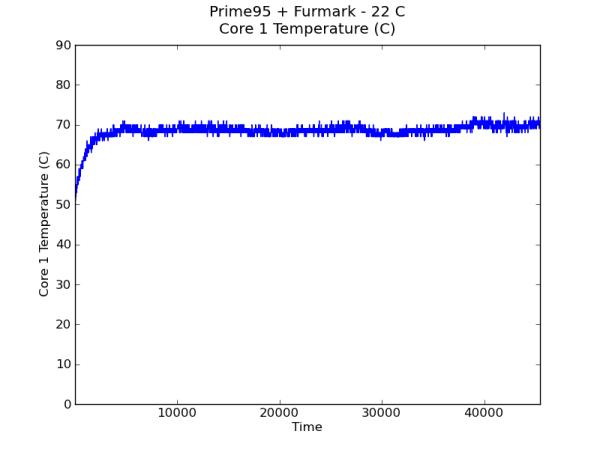
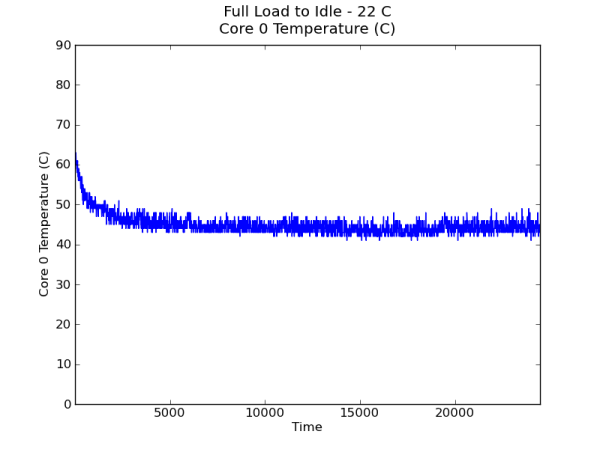
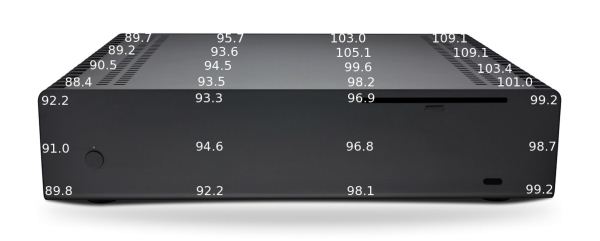
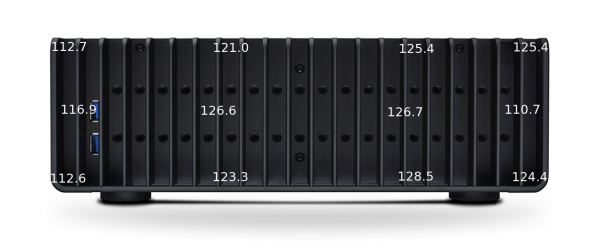

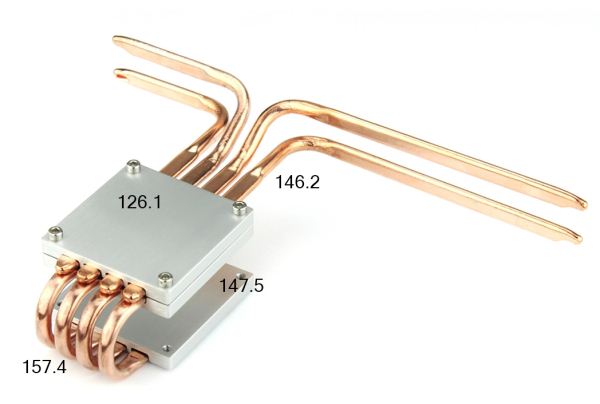








63 Comments
View All Comments
sheh - Saturday, December 22, 2012 - link
I think most of the visitors here are US-based. Though yes, C would be better. :)Jaaap - Saturday, December 22, 2012 - link
On the Thermal Performance page, at the rop you say:... because it is quite common for improperly designed thermal solutions to *not* prevent processors from reaching their maximum permissible junction temperature.
not prevent?
sheh - Saturday, December 22, 2012 - link
AKA, let CPUs overheat and start throttling.sheh - Saturday, December 22, 2012 - link
...the woes of double negative. :)ganeshts - Saturday, December 22, 2012 - link
Yes, it conveys that bad thermal solutions allow the processor to reach Tjmax. Throttling results and there is a loss in performance.mobutu - Sunday, December 23, 2012 - link
I hope you'll do a full stress test on the CPU and GPU simultaneous because it is not enough if the 150W picoPSU holds this setup only on idle and low-stress.Also please find out from Streacom when the 180W and particularly the 250W will be available for purchase.
Interested in a i5/i7 + 7770 setup powered by that internal 250W max PSU.
Thanks for the review!
Subyman - Sunday, December 23, 2012 - link
I was interested until I saw the price. I know people will pay a premium for silence, but $430 seems somewhat excessive.agentsmithitaly - Sunday, December 23, 2012 - link
I know it has been already already debated, but measurement units are quite inconsistent in Anandtech's articles.Sometimes they report both Celsius and Fahrenheit for temperatures, as well as inches and millimeters for length measurements, in this case we see only metric units for the case weight, dimensions, celsius degrees for the ambient temperature, and only imperial units for case temperatures.
Is it possible to have International system of units on all articles? Not only for the international visitors I'm sure Anandtech has, but also because this is technology website, which I think it could be considered as science. And scientists use metrical units, including NASA ones. You remember what happened to the Mars Climate Orbiter, right?
Apart this, keep up the good work guys!
Landiepete - Monday, December 24, 2012 - link
I have a FC8 Evo case waiting for a build, and I'm going to try and build a HTPC with an AMD A10 on a mini-itx board. The A10-5700 has a 65W TDP AND 7660D graphics on board, and performane should be quite sufficient for HTPC. In a pinch I could try the 5800, but the 100W TDP might be just OTT;Incidentally, streacom does a nice infrared remote kit to go with their cases.
cerietke - Monday, December 24, 2012 - link
I don't know about the FC8, but for my FC5 the mini-ITX options available would not work due to something being in the way of the heatpipes (if you haven't you may want to check on that). Streacom told me they tried 95 W TDP processors for the FC5, but can only recommend them in areas with considerable airflow. My A10-5700 is already getting near 80 C, though so far I haven't been able to confirm or deny whether the case is to blame.